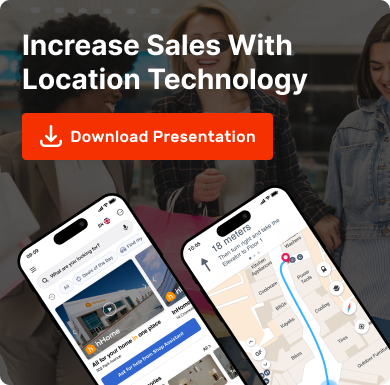Big Box Retail & Malls

Retail stores in 2025 are not what they used to be. Safety isn’t just about guards or cameras anymore. Today, it’s about smart systems that quietly protect both employees and customers. These systems are fast, responsive and built to prevent problems before they start. They’re changing how safety feels, not just how it functions.

Why It Matters
Retail workers face real risks: slips, heavy lifting, aggressive customers. Shoppers expect a safe, calm environment. And for store owners, even one incident can mean lost trust or legal trouble. This is where smart retail workplace safety systems make a difference.
Smart Safety Supports Everyone:

- Employees wear panic-button badges or smart tags. If something goes wrong, they can call for help instantly. New laws like New York’s Retail Worker Safety Act are now making this mandatory in many places.
- Customers benefit from safer aisles, fewer spills and real-time updates during emergencies.
- Retailers save money on insurance and avoid costly incidents. With retail risk management systems, they can spot danger zones and fix problems early.


What Powers These Systems?
1. Sensors That See More Than We Do
Tiny IoT sensors track movement, detect spills and watch crowd sizes. If someone drops a drink or an exit is blocked, the system alerts staff right away. These tools prevent accidents and reduce response time.
2. AI That Knows What to Watch For
AI doesn’t just record video. It can spot risks in real time , a fall, a crowd surge or a suspicious action. It also learns patterns, like when shoplifting happens most often or where slips are common.
When there’s an emergency, AI helps guide people to safety and prevents panic by managing flow.
3. Communication That Works When It Counts
Smart systems connect directly with staff and customers. For example, if there’s a fire alarm, the store app sends a message: “Exit calmly through the nearest door.” Screens inside the store show the same message.
Mapsted, known for indoor navigation, helps make this even smoother. Their technology shows people exactly where to go, no extra hardware needed.
4. Wearables That Protect
Retail workers now use simple wearable tools:
- Panic-button badges
- Smart helmets that detect impact
- Vests that track fatigue or heart rate
These connect with the store’s system. Even in a backroom or parking lot, a worker can call for help. Some even start recording audio automatically, helping document incidents clearly.
Wearables are becoming essential to modern safety systems. Devices like Mapsted’s Badge and Tag feature SOS buttons and real-time location tracking. If an employee feels unsafe, they can trigger an alert instantly. These devices link remote areas like stockrooms or parking lots to the store’s main safety network. Some models even begin audio recording when activated, helping document incidents clearly.
Real Results
- Lowe’s used AI vision to spot floor hazards like spills. In six months, slip-and-fall accidents dropped by 60%.
- The Home Depot trained staff using VR to handle fires or robberies. This led to fewer injuries and higher confidence.
These stories show what’s possible when smart systems are used with purpose.
A Safer Future
Smart Retail Workplace Safety Systems aren’t just tools. They show that a store values its people. That it’s ready, not just reacting. With tech like AI, sensors and wearables, stores can be safer, calmer and more trusted.
Mapsted and other innovators are helping stores do more than just sell. They’re helping protect everyone inside.
Because in retail, safety shouldn’t just be seen. It should be felt.If you found this blog helpful, please read our blog on How Sustainable Design is Transforming Modern Retail Malls? or watch our video on Smart Retail Navigation Solutions for Big Box Stores to learn more.
Frequently Asked Questions
Q1. What is a smart retail workplace safety system?
Ans. A smart retail safety system uses technology like sensors, wearables and AI to prevent hazards, alert staff and protect both employees and customers.
Q2. How does wearable tech help retail employees?
Ans. Wearable devices like panic-button badges let staff discreetly signal for help and share their location during emergencies, improving response time and confidence.
Q3. How do retailers use AI to enhance customer safety?
Ans. AI systems monitor for hazards like spills, overcrowding or theft and send real-time alerts to staff. Some can even guide crowd flow during emergencies.
Q4. What role does Mapsted play in retail safety?
Ans. Mapsted offers beacon-free indoor navigation. During emergencies, it helps guide customers and staff to safe exits using real-time location-based alerts.
